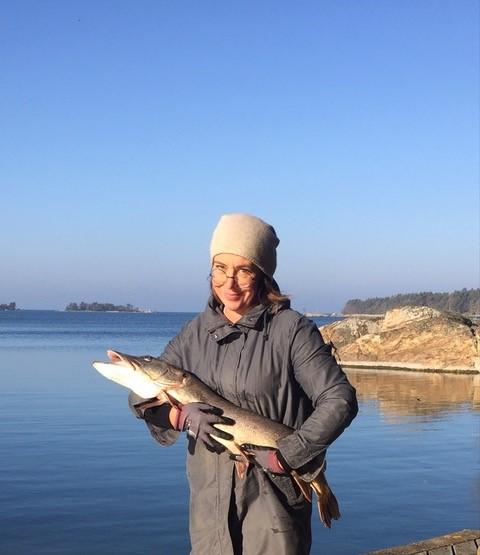I have been extremely lucky in my relationship with the Baltic Sea, I would even say privileged, as, through the years, I have been able to enjoy the best sides of the sea in various different ways.
My husband sails, and back in the day when we were about to embark on our family’s summer vacation, we would pack our tiny wooden skerry cruiser full of camping meals, clothes for every weather, board games, books and maps, and would head out to the archipelago. As a Sea Scout, my husband knew how to take us to idyllic village harbours, places of cultural and historical interest in the archipelago, and unbelievably beautiful deserted islands, reachable only with a small boat. Each island was a wonderful and unique tiny universe of its own. Our adventures were fabulous fun, never mind what the weather was or what tiny accidents we might come across.
Later, we built a small house on a cliff by the sea. This has been my vantage point from which I can observe the turn of the seasons and the magnificent, ever-changing natural phenomena displayed on the sea, and where I can live the life of a part-time islander.
Since I am so very fond of the sea, try to make consumer choices that are ecological and nature-conserving, and in other ways too try to behave well when moving about in nature, I have always been foolish enough to think that my relationship with the sea is a good one. Then I completed the Baltic Sea footprint test. I was shocked to realize that in fact I am an enemy, not a friend of the sea. My life and my existence create bucketfuls of nutrient load in the sea. For the purposes of Baltic Sea protection, it would be best if I would stay as far away from the sea as possible!
While doing the test, I noticed that there was still one feature of my behaviour that increased the wellbeing of the sea in a concrete way. One thing you see we do at our summer cottage is fish, and this is an excellent way to remove nutrients from the sea. For the main part, we fish with large mesh fishing nets, and our catch consists mostly of so-called trash fish: bream, ide, and roach. These are fish that you rarely see on the fish counter of your supermarket, probably because they contain a lot of bones. Bream, ide and roach are however very tasty fish; and the ide, a plump, fleshy fish that resembles rainbow trout, is a particular favourite of mine. If you first cook or smoke the fish lightly or steam it in the oven, you can easily remove the sharp bits. With a little practice, you will be able to notice the fish bones relatively fast. Once the fish is cooked, you can prepare a variety of delicacies, such as smoked bream spread, sea fish patties, fish loaf, and pasta sauce. After gutting, fish waste can be put in an odour-free composter so the nutrients can be reused in your garden. If you want something to noodle with on your summer vacation, and are looking for at least some relief for your environmental anxiety, it is in many ways a winning hobby.
Eeva Lithovius
Interior Architect
Eeva Lithovius is the designer of the Raita bench, featured e.g. in the collections of the Design Museum of Helsinki. In 2019, the bench received new, sea-themed colours. For each sale of a blue-white-black-green bench, €100 is donated to the John Nurminen Foundation’s Clean Baltic Sea projects.
Read more on the cooperation: Durat joins the Baltic Sea rescue team
This summer, Durat will set up Baltic Sea info points in connection with maritime events. Come and tell your #seastory, i.e. why the Baltic Sea is important to you, to Durat’s video interview team and participate in a lottery where you can win Durat’s Raita bench, designed by Eeva Lithovius. Get to know the sea stories that others have shared on Durat’s campaign web page, www.meritarinasi.fi (in Finnish)

